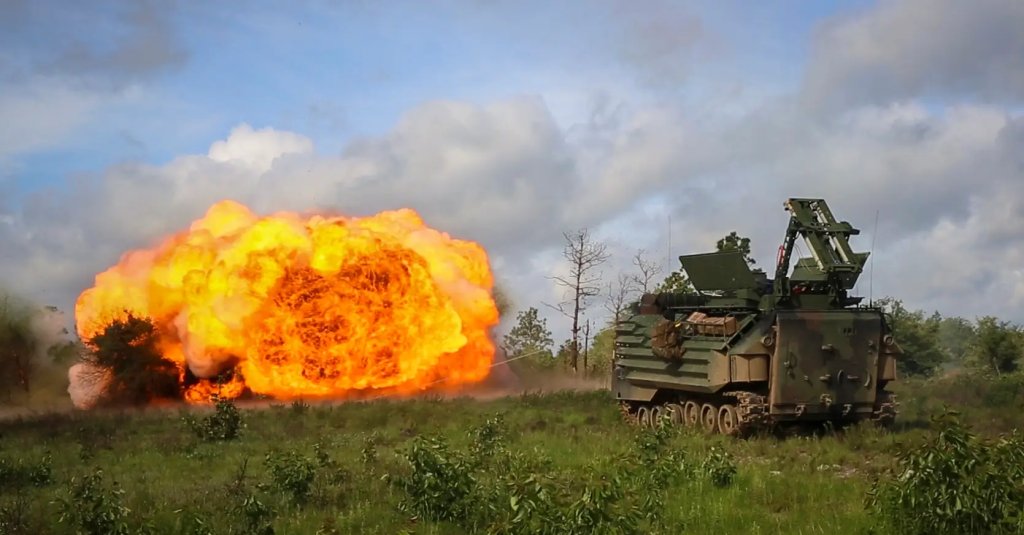

It’s time to go take out the enemy position. Whether it’s North Korean artillerymen raining rounds down on Seoul or an insurgency bomb factory, your most important targets can be protected by mines and IEDs that will slow down even the most determined force. But there’s a tool made of 1,750 pounds of C4 that will get you through in a hurry: the MICLIC.
Originally developed by the Marine Corps, the Mine Clearing Line Charge is exactly what it sounds like: A line of explosive charges that can clear enemy mines.
The basic design is also super simple. Small bundles of C4 are strung together into a 350-foot long single charge. A MK22 Mod 4 rocket is attached to one end of the line, and a few dozen feet of extra cable attaches the whole thing to a breaching vehicle. The whole thing is often packed into a trailer for easy deployment and movement.
When the Marines or Army reach an enemy minefield, they fire the rocket, and it carries the explosives across 350 feet of defended territory. And then the C4 is detonated, clearing a lane about 26 feet wide. That’s over 9,000 square feet of territory cleared with a few button presses.
If the minefield is deeper than 350 feet, then another breaching vehicle can drive to the end of the cleared lane and fire a second MICLIC to keep the party going. The MICLIC also works pretty well on IEDs and other explosive-based defenses.

All of this is much easier and faster than clearing the obstacles by hand or with plows, and much safer. But we should be clear that there are some limitations to the MICLIC.
First, they have a reputation for failing to detonate. This author has seen a MICLIC fail, and correcting it typically requires that explosive ordnance disposal experts come out. (Though, in combat, we’re willing to bet that the engineers chuck a few other explosives at it with their fingers crossed first.)
But another important caveat to the MICLIC is that it’s specifically designed to take out what are called “single pulse, pressure fuzed mines.” Basically, those are the mines that go off once they are stepped on or driven over. But some mines have very specialized triggers. Maybe they go off the second time they are stepped on, or they are set off by an operator or a remote signal.
MICLICs can destroy these mines through the miracle of sympathetic detonations. Basically, the MICLIC’s explosion can activate the payloads of the closest mines even if it can’t activate the fuse. But a mine or IED with a special fuse that’s 10 feet from the MICLIC might survive. This could result in Marines hoping for a 25-foot wide safe lane finding out that they only have a 20-foot wide lane in the worst way possible.
Still, the MICLIC rapidly gets rid of a lot of potential mines all at once. And engineers can always follow up with additional breaching vehicles to be sure the lane is clear. If you’re the guy driving a plow to make sure the lane is clear, you’re going to appreciate every mine that the MICLIC gets rid of so that you don’t have to hit it.
